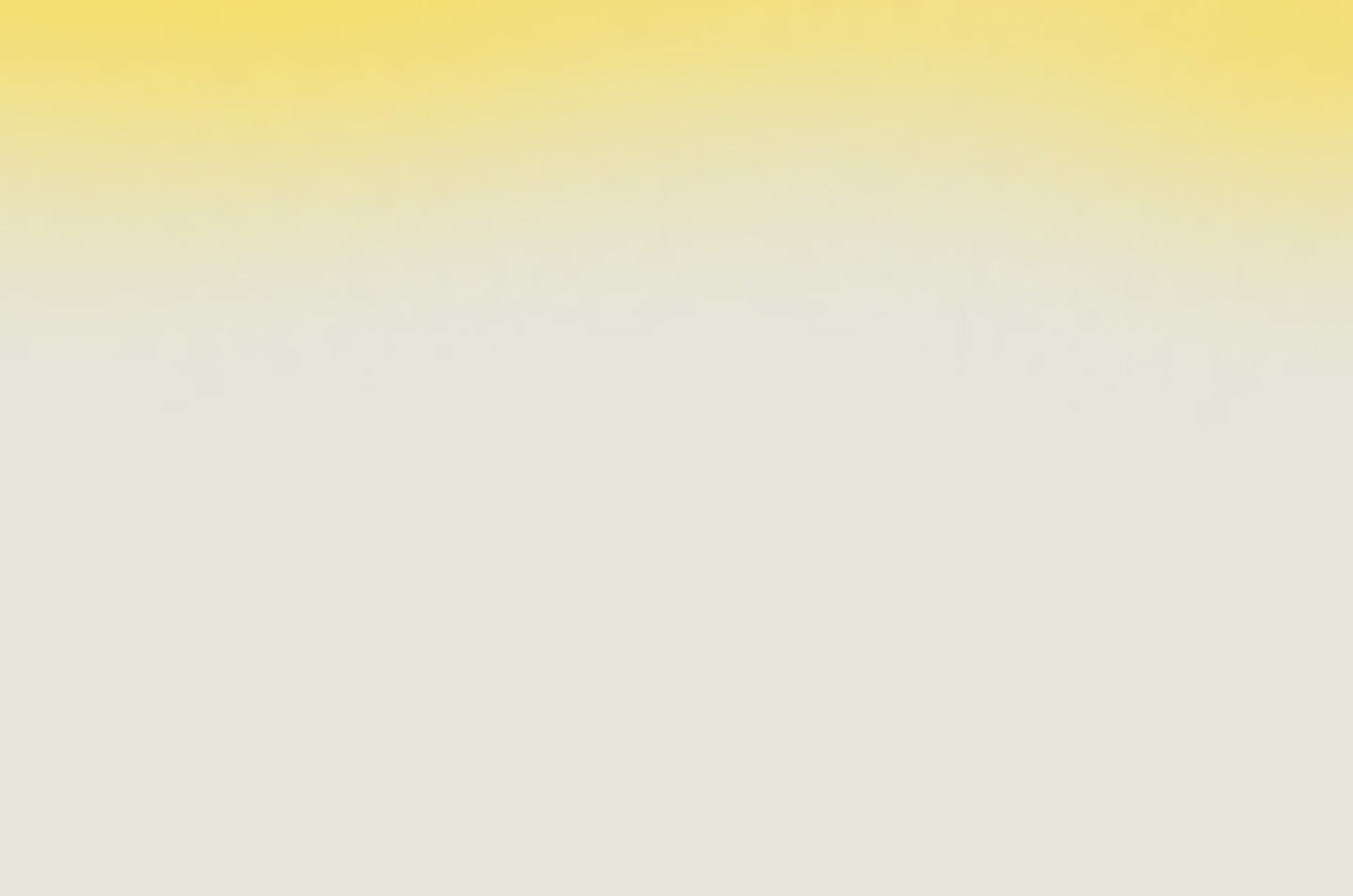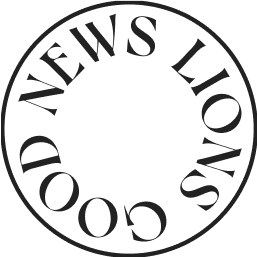IMAGINATION
When "imagination" becomes reality
the power to breakthrough becomes unparalleled.
The sixth key word for communication is “imagination”. Lupins is the flower that holds the meaning of “imagination and fantasy”. In ancient Europe, it was said that eating lupins would make you feel brighter and stimulate your imagination. There are also theories that they were eaten as a medicinal herb, and as a snack with beer. They may have been effective at liberating the mind. Among these flowers, rose colored lupins represent “curiosity.” They could also be seen as a medium that leads to encounters with a presence that has never been seen before in a world of fantasy. I personally think that it is important to input various information when it comes to stimulating your imagination. In addition, it is said that you shouldn't use too much fertilizer because the flower will vigorously absorb it, but it seems that this fact is embodied in the sense that various inputs are important to stimulate your imagination. Is this too much of a leap? Whatever the case may be, this flower seems to give me inspiration in some way. The small butterfly-looking flowers blooming together in a stick shape, which resembles a magic wand.
“Imagination” is very important for communication. Even today, people in the communication industry will often ask, “To what extent can you see things from someone else's point of view?” No matter how much information is bombarded with an advertisement, it may be useless from the viewer's perspective, leaving them completely unmoved. From the point of view of the sender, they have a particular message they want you to take away, so with a certain degree of control, media, including commercials, tend to repeat only the sender's thoughts. However, for people with no interest in the information at all, the message will pass right through them, and sometimes can even be seen as annoying or a nuisance. There are many people who hide or report the recommended information that is frequently displayed on websites out of frustration. Similar experiences also occur when surfing the Internet and browsing social media, adding to the depression. It is often said that “Too much can be as bad as too little,” and an enthusiastic approach sometimes unconsciously turns into an unacceptable approach for receivers.
This tells us that it is important not only to convey your message, but also to communicate with others by grasping their feelings. Just because you want to share something does not mean that the other person will share the same enthusiasm. You should anticipate topics that the target will likely be interested in, prepare enough information about the parts they will really get into, and prepare a second and third backup strategy, all while having a direct conversation to gauge their reactions. You should start by finding a point of common ground and interest in the conversation, and continue by slowly telling them what you want to say. It is not an exaggeration to say that people, then, will finally start to listen to you.
I would say it is just a very common procedure to pay close attention to the whole situation and the person's reactions in conversation, just like conversations in everyday life. There is no doubt that communication that automatically repeats and imposes the same information without thinking about the other person has a critical impact on the attention economy in this digital age.
The attention economy is a concept proposed by Herbert Simon, a psychologist and economist who won the Nobel Prize in economics in 1969, which says that people's “attention” is treated like “currency” in the economy. Since various tech companies represented by GAFA have emerged, digitalization centered on the distribution of information has advanced, and we can measure the numbers of active users, PV, and the like as data, which has contributed to accelerating this flow. On the other hand, as Herbert Simon said, “a wealth of information creates a poverty of attention.” He points out that we pay less attention to each piece of information when we get too much, because it consumes our attention bit by bit. As mentioned in the beginning of this report, nearly half of the NPOs who cooperated in this survey said that “it was difficult to get people to recognize and understand the issues”. In this information society, even if you create content, it is becoming more difficult to reach the point where people can find and understand it. It may be the same for all organizations, who may be in trouble in terms of how they can deal with this dramatically shifting information environment...
What can we do to break out of this so-called “situation of ignored information”? First of all, I would like to introduce the case of the German branch of WWF, an environmental conservation organization active in about 100 countries around the world. The “Eurythenes plasticus” has a clever trick where it shows off its “imagination” to the fullest.
Eurythenes plasticus


In fact, the people of Germany are said to be leading the world in waste separation. However, less than 30% of plastic is recycled, and instead of disposing of it in their country, it gets exported to Southeast Asian countries. The amount is surprisingly the third largest in the world. The countries to which plastic waste is exported are less regulated, and the waste is simply landfilled. After that, the wind blows the wastes into rivers and finally flows into the sea. The plastic waste in the ocean gradually breaks down into microplastics, and slowly sinks to the bottom of the ocean. Although the microplastics dissolved in seawater are invisible to the eye, it is said that it takes almost 400 years to fully decompose. The WWF, which has been working on the problem of marine plastic waste, aimed to reinvigorate public attention and action on this issue that people have lost a sense of urgency for over time.
Studies of the consequences of marine plastics have shown that deep-sea creatures are already showing the effects of plastic pollution in their bodies. Surprisingly, 72 percent of deep-sea crustaceans were contaminated by ingested plastics. This number was a big enough to show the severity of the problem. However, they felt that the number was not powerful enough to attract the attention of a wide range of people, so they planned to promote the issue to the world as a historical discovery that everyone would want to hear. There were headlines with the title, “Discovery of a New Species of Deep-sea Creature.”
They worked with deep-sea biologists to discover a new species of deep-sea creature that is contaminated with plastic, named it after the pollution, and presented it to the world. They believed that if they could jump into the special field of science and influence the taxonomic record of the Earth, it would be much more persuasive than conventional advertising campaigns, and continue to make a big impact on people through an academic approach. Whether it is a cosmic star or a new creature, when a previously unknown entity is discovered, it is sure be reported in the big news and come up in conversation. If the words “contaminated with marine plastic waste” are added, the people talking about the topic would have no choice but to think about marine pollution. This way of creating spontaneous conversation and raising awareness builds a much better narrative (the way the story is told) than simple persuasion.
The new species was named “Eurythenes plasticus” after the plastics found inside them. A scientific paper was published on the subject, and news about the animal was reported worldwide. Shortly after, the WWF launched a campaign to collect signatures for a petition calling for a legally binding UN agreement to end plastic pollution. 2.2 million signatures were collected and immediately submitted to the United Nations. In connection with this, the fifth session of the United Nations Environment Assembly resumed on March 2, 2022, adopting the idea of, “Ending Plastic Pollution: Toward a Legally Binding International Commitment” and it was decided that an Intergovernmental Negotiating Committee would be established. The campaign was started with the official publication of a scientific paper on March 5, 2020, and “Eurythenes plasticus”, as an official part of the taxonomic record on Earth, was engraved in history.
They have also partnered with museums in Germany and around the world, including the Smithsonian Institution, to permanently display this new species, which also led to lasting appeal from an educational point of view. If the actual creature becomes a permanent exhibition in museums, people will see the undeniable reality of the situation, not only something they heard about. Even if there are those who disagree and fight against these things, the fact that cannot be overturned is strong. The permanent exhibitions have attracted more than 410,000 visitors, and is attracting great interest from schools.
There is also a website called “plasticus.school,” an international educational resource opened at the same time, which received thousands of visits from educational institutions and other sources. Furthermore, “Eurythenes plasticus” was registered in the Guinness World Records as the first new species contaminated with plastic.
Next is the latest example from the WWF. It is an art exhibition caled, “Climate realism” with the theme of climate change, which is not something that's easily accessible to us. This is an effort to make climate change more accessible through world masterpieces that people from all over the world are familiar with.
Climate Realism

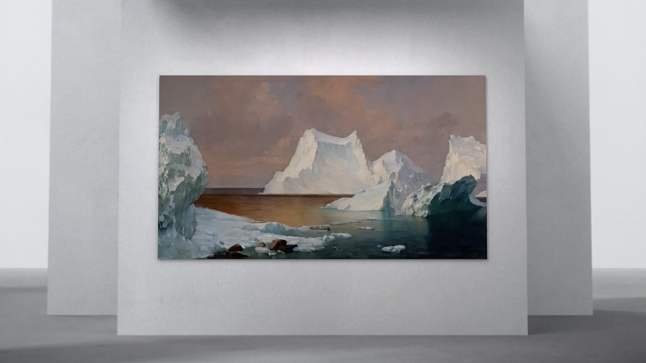
Do you know about the climate change scenario presented by the United Nations IPCC (Intergovernmental Panel on Climate Change)? It explains what the impact of climate change will be by 2100. Based on more than 34,000 scientific publications, it provides detailed information on what the impacts will be at various points in the three patterns of emissions control: no reductions at all, slight reductions, and significant reductions. However, this material was difficult for the general public to understand, and numerical data only made it even more difficult, so it was hard for people to sympathize with the issues. How can we get people to understand and be more interested in these facts? For this reason, we’ve come up with a new concept called “Climate realism,” which translates these climate change scenarios, visualizes them, and appeals to a person's intuition rather than just using text based explanations.
“How would Monet draw a water lily if the earth's temperature rose by another 4 degrees Celsius?” “How much do we need to reduce emissions to save Gauguin's South Seas from environmental destruction?” And “what will happen to Van Gogh's wheat fields if emissions continue to increase?” Eight famous landscape paintings by Gauguin, Van Gogh, Monet, Pissarro and other artists were converted to reflect a year 2100 scenario. The changing patterns were created and visualized in a total of 240 paintings. It was then developed along with the launch of donated projects at art exhibitions and microsites. As a result of this, the microsites achieved 32,000 organic views during the same period. The fact that 80 percent of users watched almost every video is probably because the content was interesting. In fact, looking at the website, you'll realize that if global warming continues, the result is very shocking and all of the masterpieces do not retain their original form.
The world of “what if” easily attracts people's interest. This applies to the drama series “The Twilight Zone”*1, and the “If series” from the TV program by the Drifters “Hachiji da yo! Zen'in shūgō (It’s 8 o'clock! Everyone gather together)”*2. If we can recognize that simulation exactly with video, it will be much easier for people to understand. The Drifters end every comedy skit with, “That's not right!” and the audience agrees. This is very strategic in that it helps to build consensus.
- *1 :
- A science fiction anthology television series that aired in the United States from 1959 to 1964. The characters get lost in a world called the “Twilight Zone” and go through unsettling and unusual events.
- *2 :
- This was the title program of the Drifters, whose members include Ken Shimura, Cha Kato, Chosuke Ikariya, and others, and it aired 803 broadcasts as a Japanese comedy with a studio audience. Its comedy skit, the ““If XXX were YYY”, was very popular.
When it comes to communication in this day and age, it's also important to think about who will take the information seriously, and whether they will be moved by it. In this modern era with countless creators on various social media platforms, many people quickly change their minds or act while thinking, “Well, if this person says so.” Even if the information is the same, the results can be completely different depending on who is telling the story. If you want to be satisfied within the same world view, influencers with similar hobbies and lifestyles are a good choice, while an independent expert may be better if you want reliability. When it comes to managing a company, a story has no meaning if it does not come from managers, and for new products, the stories of the struggles of the developers involved help bring sympathy. If you pick the wrong speaker, the story's impact will be weakened, and you'll lose the opportunity to properly tell that story. Carefully choosing the right speaker is essential. In that sense, the WWF is very good at storytelling. As effective storytellers, suffering creatures (Eurythenes plasticus) that are suffering from environmental destruction or famous paintings from around the world were discovered and brought into the spotlight, and soon awareness was spreading about their problems. Of course, these two examples are using new technologies such as generative AI to express their ideas, but we should understand that they are the result of careful consideration about the points of contact we should set for the current problem at the core of these cases, and how we can reach everyone and turn them around. If we look at it from this point of view, we will more fully understand its essence.
Next, I will introduce “The Ant Rally,” in which living creatures express their difficulties and urgency about the destruction of the tropical rainforest.
The Ant Rally

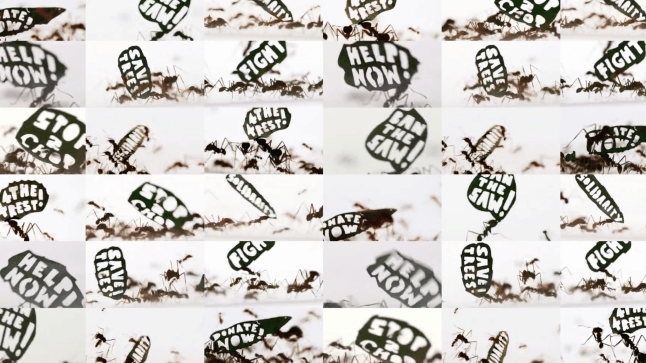
The campaign was designed to raise awareness of the WWF's rainforest projects. The issue of rainforest deforestation is well-known, but attention is slowly fading away and we are running out of opportunities to solve the problem. In order to draw more attention to this issue, we created an opportunity to highlight those who are still struggling with deforestation, and allow them to talk about their plight. That opportunity is called “The Ant Rally.”
The demonstration, which took place at the Cologne Zoo in Germany, lasted five days and had about 500,000 participants. Each of them held signs against logging in rainforests and marched through the grounds at 3:00 a.m. every day. The placards reading, “FIGHT”, “SOLIDARITY”, “SAVE THE TREES!”, and “ACT NOW!” were made of leaves, and the crowd was like an army of ants. Over those five days, 30,000 visitors watched in person, and videos posted on the WWF's website, YouTube, and the Cologne Zoo's website were seen online, amassing roughly 1,000,000 views.
Global social issues are topics everyone is familiar with, and when a specific incident or problem occurs, it attracts people's attention all at once. However, these issues also tend to be considered something that cannot be changed. If there isn't a spark, these issues tend to be pushed to the corner of your memory. However, it would be rash to use emergencies, accidents, and disasters in the hope of spreading awareness. If you try to create an opportunity to spread awareness, like a demonstration, people are also likely to say “It’s nothing special,” and forget about it without giving it much thought, even if your actions were noticed. Who is thinking? What are they thinking about? And why now? It's important to have a means of changing the viewer's mind on who is thinking about an issue and why they are acting on it. In this sense, this case gained more sympathy and support by showing the “face” of who was actually in distress and transmitting their message.
It's hard to understand who is in trouble and how they are in trouble just by hearing about it, which makes it difficult to actually do something. At the beginning, I mentioned that “imagination” is vital to understand how others feel, but it's also important to use your “imagination” to understand what kind of actions you can take to raise the most awareness. I think it is quite difficult, maybe even crazy, to imagine using ants, but when you see their plight for yourself, you can certainly imagine how they might feel.
Let me introduce another case rallied behind a unique speaker. That is “Animal Copyrights”. The project, titled “Animal Copyrights,” is the first photo bank created by animals themselves, starring animals, and with all proceeds donated to animals. The WWF, which usually advocates for animal rights, has now decided to protect their portrait rights as well. Working together with LatinStock, a major photo bank, an exclusive collection of images of animals was created.
Animal Copyrights

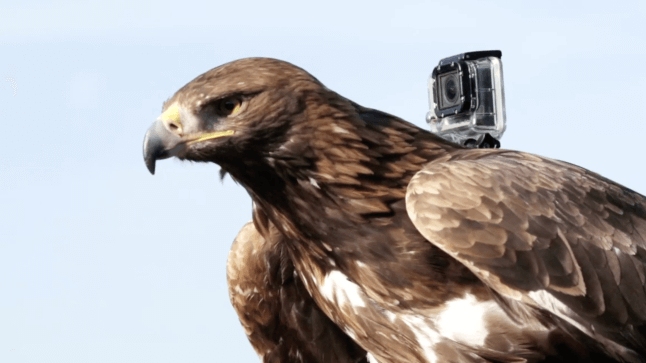
The series of images showed the behavior of wolves, sea turtles, eagles, and other animals, which is the most moving thing I have ever seen. It feels like I can switch places with those animals. I found it incredibly interesting. You can almost feel as if you are swimming in deep seas, exploring dark caves, and flying over endless valleys. The system then directs anyone interested to LatinStock.com where these images can be purchased. All proceeds from the purchases will be used to protect animals. It was designed so animals could raise funds by themselves.
In addition, the images are organized according to which animals were photographed, and it is possible to know what animals the proceeds will be used to protect. As soon as the campaign was launched on March 21, 2015, various media outlets were interested in the system and praised it as a new way to use photography to raise donations. Access to LatinStock also increased by 300%, and WWF membership increased by 10%. In addition to the novelty of the images, this is an imaginative example of a speaker that is taking action to raise funds for an issue.
These examples by the WWF could be a great source of inspiration for Japanese NPOs that have trouble answering the question, “Who can successfully share information and move people?” In the case of the WWF, for many years they have continued the scheme of being conscious of these creative jumps that viewers see in the end.
There are more than 50,000 NPOs working to create a better world here in Japan. Among them, there are only about 1,200 certified NPOs nationwide that meet the requirements of donation income and information disclosure, and that donors can receive tax benefits from. Moreover, more than 30% of organizations have annual earned revenue of less than 10 million yen due to the COVID-19 pandemic, and they are struggling to secure funds for their efforts. According to the aggregated data, 33% (392 organizations) of the total were those with annual earned revenue of less than 10 million yen. There are 35% of organizations from 10 million yen to less than 50 million yen, 14% of companies from 50 million yen to less than 0.1 billion yen, and only 17% (206 companies) are certified as 0.1 billion yen or more. On the other hand, there are 49 organizations with annual income of 1 million yen or less, which is also a very tight budget to start their desired efforts. Corporations in the Kanto region that are engaged in environmental conservation will have negative net assets carried forward for the next fiscal year, which is equivalent to corporate equity capital for two consecutive years until FY2020. If they are not recognized and funding becomes tight, they will naturally have to scale back their activities, leading to an impact on their operations. It is said that many organizations are unable to compensate for their deficits by borrowing money or pay remuneration to their staff.
The amount of donations to NPOs in the United States is 28 times that of Japan. It is understandable that there are more than 1.5 million non-profit organizations working held up by a background of abundant donations, and there are many initiatives that are entered into Cannes Lions and other organizations. However, as we have seen so far, various actions can expand in multiple directions and generate greater leverage than the accumulation of individual activities through their ideas, and it can grow from a creative promotion to a big wave. Naturally there is no definitive rule, and I think the fact is that organizations are trying to implement measures while keeping an eye on the interests of society at that time. However, some organizations, such as the WWF, are constantly taking on challenges, finding particular schemes such as letting animals speak their own messages, and leading them to the next stage. The point is not only to lament the current issues we are facing, but to take on these challenges and work hard to overcome them. We can start by learning and imitating the success stories. It is necessary to steal good points, or in other words such as in practicing kendo and tea ceremony, something like “shuhari” is necessary. “Shu” is the phase of faithfully following the teachings, patterns, and techniques of teachers and schools to acquire skills. “Ha” is the phase of thinking about the teachings of other teachers and schools, adopting good points from them, and developing mental techniques as well. And “Ri” is the phase of leaving your teacher or school and creating and establishing something unique and new. Acquiring and developing your own form will make you grow and eventually be able to create your own way through the knowledge you have gained. I would appreciate it if this site could become a catalyst for you to take the next step to innovation in your own behavior and job execution by understanding the past.
Finally, I would like to introduce the efficient efforts of the WWF, which Japan won the gold award in the cyber category for the first time. This is another work that can be considered a cornerstone of Cyber Japan; although the mechanism seems small, it is highly leveraged to support the effects that will follow.
This example took place in 2002, more than two decades ago, so it might seem old fashioned, but it has valuable and timeless hints that will make you say, “Aha!” with tiny details that will make you think deeply. It is a small banner ad on the Internet called “WWF Ⅱ”.
As you know, banner advertisements can only be used to put a message on a really small space, but with a little ingenuity, interactive tricks from motion are also possible. This is where the WWF developed a jigsaw puzzle. It was a cute puzzle where the viewer could place scattered pieces together one by one, but come to find only one piece missing by the time they finish. Then the message flows with perfect timing. It says, “The missing piece Pinguinus impennis went extinct in 1844.” The missing piece is in the shape of an extinct animal to indicate that the piece will not be coming back again. We then realize that we have lost an irreplaceable lifeform. Even a small banner advertisement can attract a lot of people's attention, and spread widely throughout society. It makes us feel that we still have a lot to learn, and it is a project that shows the attitude of the WWF that has been consistent since that time. After all, there is a lot to learn from history.
